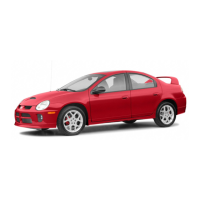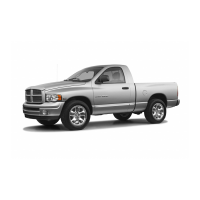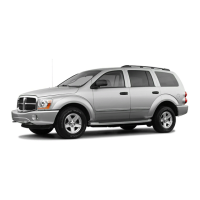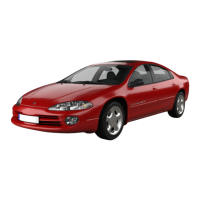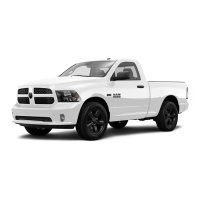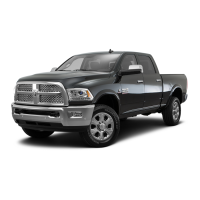3.3.3 INTERMITTENT CODE
A diagnostic trouble code that is not there every
time the Transmission Control System checks the
circuit or function is an a intermittent code. Some
intermittent codes, such as codes P1684(12),
P0891(14), P0888(15), P0725(18), P1694(19),
P0871(21), P0846(22), P0841(24), P0706(28),
P0120(29), P0750(41), P0755(42), P0760(43),
P0765(44), P0715(56), P0720(57), P1794(58),
P0951(70), P1799(74), P0884(76), P1687(77), and
P1652(78) are caused by wiring or connector prob-
lems. However intermittent codes 50 - 54 are usu-
ally caused by intermittent hydraulic seal leakage
in the clutch and/or accumulator circuits. Problems
that come and go like this are the most difficult to
diagnose, they must be looked for under the specific
conditions that cause them.
3.3.4 STARTS SINCE SET COUNTER
For the most recent code, the Starts Since Set
counter counts the number of times the vehicle has
started since it was last set. The counter will count
up to 255 starts. Note that this code only applies to
the last or most recent code set.
When there are no diagnostic trouble codes stored
in memory, the DRBIIIt will display NO DTC’S
PRESENT and the reset counter will show
“STARTS SINCE CLEAR =XXX
The number of starts helps determine if the
diagnostic trouble code is hard or intermittent.
– If the count is less that 3, the code is usually a
hard code.
– If the count is greater than 3, it is considered
an intermittent code. This means that the
engine has been started most of the time
without the code recurring.
3.3.5 TROUBLE CODE ERASURE
A Diagnostic trouble code will be cleared from
Transmission Control System memory if it has not
reset for 40 warm-up cycles.
A warm-up cycle is defined as sufficient vehicle
operation such that the coolant temperature has
risen by at least 22°C (40°F) from engine starting
and reaches a minumum temperature of 71°C
(160°F).
The Malfunction Indicator Lamp (MIL) will turn
off after 3 good trips or when the DTC’s are cleared
from the Transmission Control System.
3.3.6 EATX DTC EVENT DATA
EATX DTC EVENT DATA can be used as a
diagnostic aid when experiencing Electronic Trans-
missions with intermittent problems. When a Diag-
nostic Trouble Code (DTC) is set, the vehicles EATX
inputs are stored in the controller memory and are
retrievable with the DRBIIIt. This information can
be helpful when a DTC can not be duplicated.
The EATX DTC EVENT DATA is located in the
DRBIIIt, under the Transmission system menu, in
the sub-screen Miscellaneous. It is a good practice
to document the EATX DTC EVENT DATA before
beginning any diagnostic or service procedure.
A thorough understanding of how the transmis-
sion works is beneficial in order to interpret the
data correctly. These skills are necessary in order to
avoid an incorrect diagnosis.
A MASTERTECH video and reference book was
produced in January 2002 that explains many of
the features of the EATX DTC EVENT DATA with
several examples on how to interpret the informa-
tion and suggested training material to help under-
stand all the specifics.
EATX DTC EVENT DATA can only be erased by:
1. Disconnecting the battery.
2. Performing a DRBIIIt QUICK LEARN proce-
dure.
3. Reprogramming the EATX/NGC controller.
Erasing Transmission DTCs does not clear the
EATX DTC EVENT DATA.
3.3.7 LIST OF DIAGNOSTIC TROUBLE
CODES (DETAILED DESCRIPTIONS
FOLLOW LIST)
The Transmission Control System may report
any of the following DTC’s.
4
GENERAL INFORMATION

